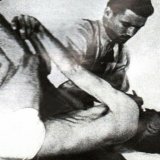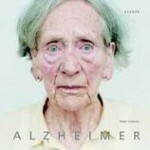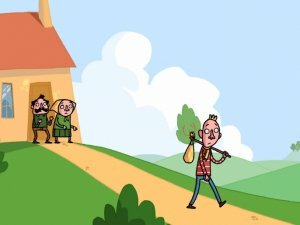New methods of treatment in psychiatry
 Psychiatry, like any other science, does not stand still. Approximately every ten years there is a revision of the classification of diseases and methods of treatment in psychiatry. Modern treatment involves a complex of biological effects and psychotherapy, coupled with actions aimed at social and labor rehabilitation.
Psychiatry, like any other science, does not stand still. Approximately every ten years there is a revision of the classification of diseases and methods of treatment in psychiatry. Modern treatment involves a complex of biological effects and psychotherapy, coupled with actions aimed at social and labor rehabilitation.
New methods of treatment in psychiatry presuppose a correctly established diagnosis, the degree of the patient's condition, consideration of the characteristics of the patient's personal characteristics. Usually, when the patient is in a serious condition, they undergo medical treatment, and at the stage of recovery and withdrawal from psychosis, psychotherapeutic methods of influence are preferred. The condition of the patient, the severity of the disease and its severity determine the mode of administration of medications. Usually they are prescribed for ingestion in the form of tablets, dragees, injections, drops. Sometimes for the speed of action, the intravenous route is used. All medicines are carefully analyzed for side effects and contraindications.
Drug treatment is carried out both outpatiently and permanently, depending on the patient's condition and desire. With pronounced pathologies, inpatient treatment is prescribed, which, with recovery, is replaced by an outpatient treatment. Ambulatory for restoration of stabilization or remission. Biological therapy implies an impact on the biological processes of the patient, which are the cause of mental pathologies.
Methods of treatment in psychiatry are not limited to treatment with medication. There is such a direction of psychotherapy as psychopharmacology. Until recently, a set of drugs from this series was very meager: caffeine, opium, valerian, ginseng, bromine salts. In the middle of the twentieth century, aminazine was discovered, which marked a new era in psychopharmacology. New methods have emerged, thanks to the discovery of tranquilizers, nootropics, antidepressants. In our time, the search for new substances that have the best effect with the least side effects continues. Psychotropic drugs are divided into several groups. Neuroleptics are used to eliminate the perception disorder and are the main means in the treatment of psychoses. May be taken orally and intramuscularly. In outpatient clinics use antipsychotics of long duration. When taking large doses, side effects can occur, manifested as tremor of hands, stiffness of movements, cramps in individual muscles. These effects can be caused by the use of modite-depot, smapa, etc. And egonil and leponex do not cause the above-described actions. Correctors are prescribed for side effects.
Tranquilizers include seduxen, phenazepam, elenium, tazenam, etc. These drugs used to calm the patient, relieve emotional tension and excessive anxiety. Cause drowsiness. Each tranquilizer has its own advantage. Some calm, others relax, others euthanize. These features are considered by the doctor at the appointment. Due to a wide range of activities, tranquilizers are used not only for mental illnesses, but also for other diseases of a physical nature.
Antidepressants are designed to improve depressive mood, to eliminate inhibition of actions. Antidepressants are of two types: stimulating and sedative action. The stimulant includes such drugs as melipramine, noredal, are used in cases when, together with a reduced mood, the patient is slowed by speech and motor activity. A sedative( tryptizol, amitriptyline) is used in the presence of anxiety. Side effects when taking antidepressants are constipation, dry mouth, palpitations, salivation, decreased pressure. But they are not dangerous to the health of the patient, and the treating doctor can help eliminate them. Antidepressants are treated for various kinds of depression.
Nootropics( drugs of metabolic action) consist of various chemical structures and methods of exposure to drugs, but they produce the same effect. Nootropics are used to increase mental performance, improve memory and attention. Nootropics are used for many mental disorders, for removing hangover syndrome in patients with alcoholism, with violations of the function of cerebral circulation. Side effects are not observed.
Mood stabilizers( or lithium salts) normalize the spasmodic mood. Accepted by patients with manic-depressive psychosis and periodic schizophrenia for the prevention of manic and depressive attacks. Patients are periodically taken blood for analysis to monitor the salt content of the serum. Side effects occur with overdose or somatic diseases.
New in psychiatry - insulin-shock therapy and ECT.Insulin-shock therapy is used in the form of a nonspecific stressor effect on the patient's body, the purpose of which is to increase its protective forces, that is, the organism begins to adapt as a result of shock, which leads to its independent struggle against the disease. The patient is daily injected with an increasing dose of insulin before the onset of a symptom of a decrease in blood sugar and a coma, from which they are excreted by injecting glucose. The course of treatment is usually 20-30 kom. Such methods in psychiatry can be used if the patient is young and physically healthy. They are treated for some forms of schizophrenia.
The method of electroconvulsive therapy consists in the fact that the patient is subjected to convulsive attacks by electric current. ECT is used in cases of psychotic depression and schizophrenia. The mechanism of the effect of current is not fully understood, but it is associated with the effect on subcortical brain centers and metabolic processes in the central nervous system.
New treatments necessarily mean the use of psychotherapy. Psychotherapy involves the impact of the doctor on the psyche of the patient with a word. The difficulty lies in the fact that the doctor needs to achieve not only the location of the patient, but also "penetrate" the patient's soul.
There are several types of psychotherapy:
· rational( the doctor explains reasonably with dialogue),
· suggestive( suggestion of some thoughts, for example, dislike for alcohol),
· suggestion in a state of wakefulness, hypnosis,
· autosuggestion,
· collective or group psychotherapy,
· family, behavioral.
All described methods of treatment are widely used in modern psychiatry. Nevertheless, scientists do not stop looking for new, more advanced methods of getting rid of mental pathologies. New methods of treatment are always coordinated with the patient or with his relatives, if the disease excludes the patient's ability to act.



